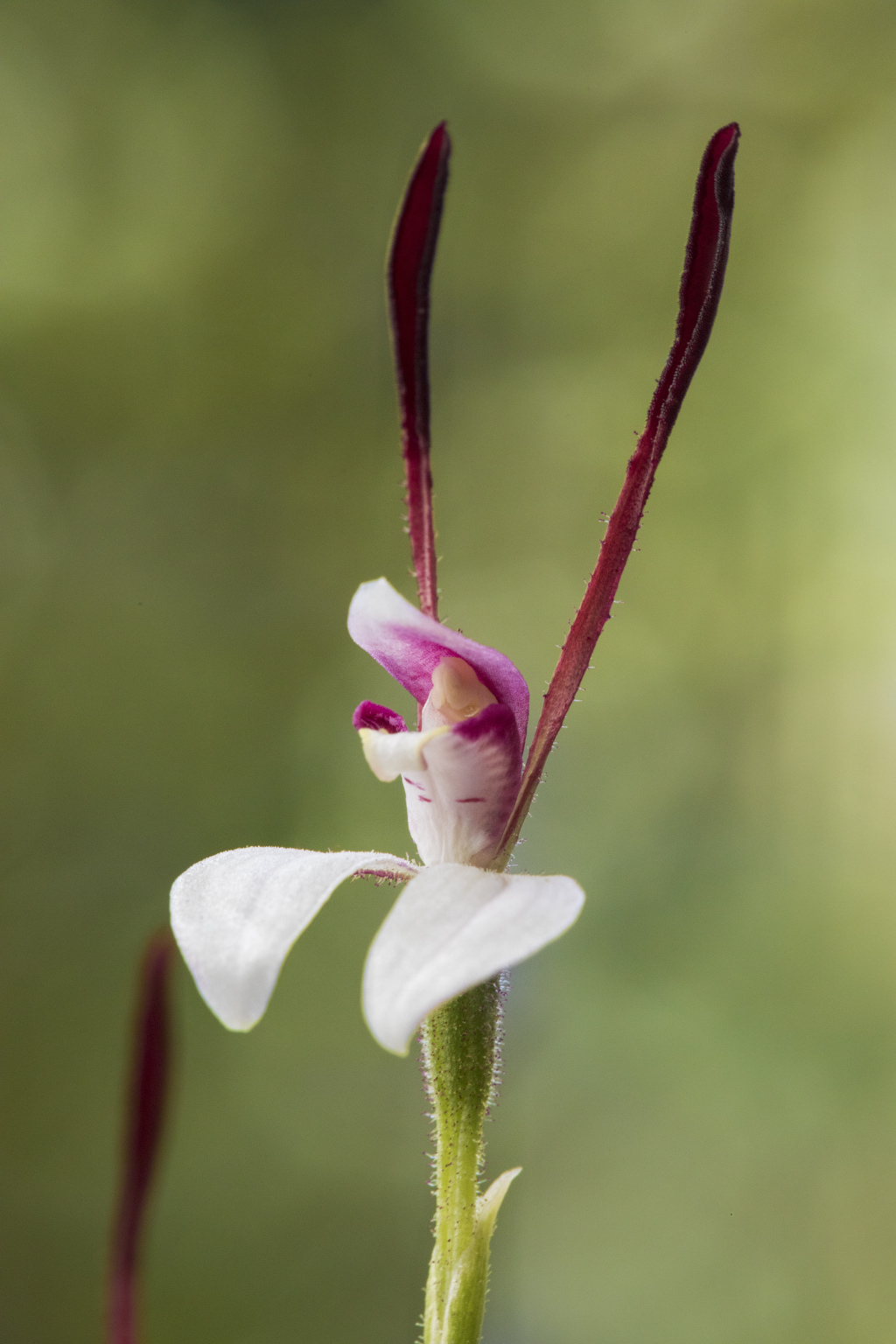Leptoceras menziesii
(R.Br.) Lindl.Flowering plant slender, 6–30 cm tall. Leaf variable in size and shape, usually ovate-lanceolate or broadly oblong-lanceolate, 3–12 cm long, 5–23 mm wide, glabrous. Flowers 1–3, white, pink and red, fragrant; dorsal sepal hooded over column, contracted gradually towards base, bluntish, c. 1 cm long, dark reddish, with numerous glandular hairs on the outside; lateral sepals spreading, broad in middle, contracted asymmetrically towards both ends, flatter on inner edge, white or pink, 10–15 mm long; petals erect, very narrowly club-shaped, glandular-hairy, 16–30 mm long, purplish-red. Labellum with short claw, circular-ovate, undivided, c. 7 mm long (when flattened), white with transverse pink or red markings, margins entire; apex blunt, recurved, white; lamina calli in 2–4 rows, not extending to tip, consisting of slender pedicels with large rounded head, yellow. Column erect and slightly incurved, widely winged, with transverse pink markings; anther compressed laterally, shortly pointed. Flowers Aug.–Nov., stimulated by fire.
Wim, GleP, VVP, GipP, OtP, WaP, Gold, CVU, GGr, DunT, NIS, EGL, EGU, WPro, HSF, HNF, OtR, Strz. Locally common on moist ground under heath or forest in southern Victoria, often near-coastal.
Formerly known as Caladenia menziesii, but now transfered to Leptoceras following Lindley (1840).
Entwisle, T.J. (1994). Orchidaceae. In: Walsh, N.G.; Entwisle, T.J., Flora of Victoria Vol. 2, Ferns and Allied Plants, Conifers and Monocotyledons, pp. 740–901. Inkata Press, Melbourne.
 Spinning
Spinning


